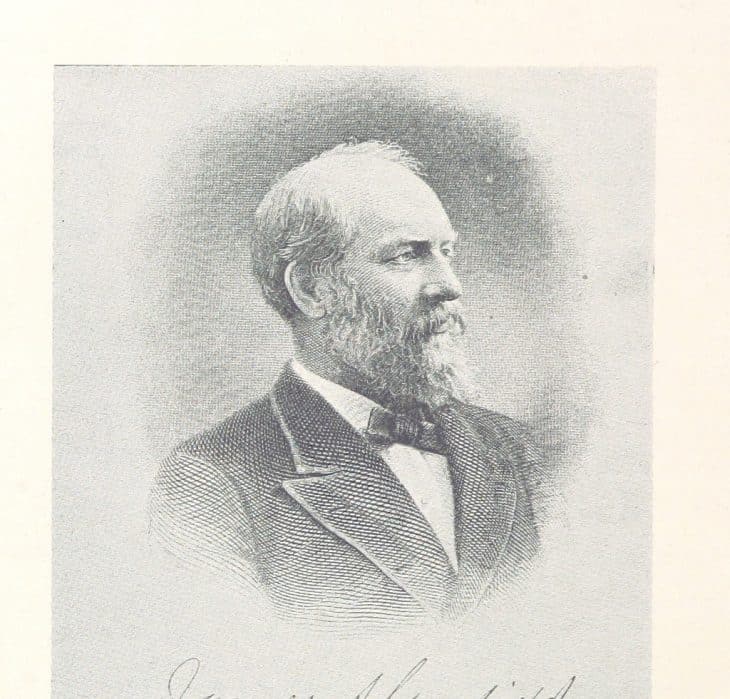
- Born: November 19, 1831 in Orange Township, Ohio
- Presidency: 20th President of the United States
- Wife: Married Lucretia Rudolph on November 11, 1858
- Education: Western Reserve Eclectic Institute; Williams College
- Professions: Minister; College President; Military General; Lawyer; Congressman; Senator; U.S. President
- Political Party: Republican
- Political Agenda: Civil Rights and Civil Service Reform
- Assassination: Shot July 2, 1881 in Washington, D.C. by Charles Guiteau
- Death: September 19, 1881 in Elberon, New Jersey
- Accomplishments: Post Office Reform; Civil Rights Reform; Pan-American Conference
- Presidency: James Garfield was the 20th President of the U.S.
- Academia: James Garfield was a College President at Age 25
- Military: James Garfield Achieved the Rank of Major General by Age 32
- Wife: James Garfield’s Courtship of Future First Lady Lucretia Rudolph Began during College
- Beliefs: James Garfield was a Fervent Supporter of Civil Rights
- Civil Rights: James Garfield Appointed Former Slaves to Government Positions
- Career: James Garfield Worked as a Carpenter, Mule Team Driver, and School Janitor
- Religion: James Garfield was the Only President Who was also an Ordained Minister
- Assassination: James Garfield was Assassinated Only 200 Days into His Presidency
- Achievements: James Garfield Initiated Postal Service Reform and Friendlier Relations with Latin America
- James Garfield was the Last of the Log Cabin Presidents
- James Garfield was a Compromise Candidate in the 1880 Election
- James Garfield was One of Three Presidents to Hold Office in 1881
- James Garfield’s Favorite Food was Squirrel Soup
- James Garfield’s Spinal Column is Owned by a Museum
- James Garfield was Multi-Lingual and Ambidextrous
- James Garfield was a Congressman, Senator-Elect, and President-Elect at the Same Time
- James Garfield’s Death was Ultimately Caused by Doctors
- James Garfield’s Death was a Turning Point in American Medicine
- James Garfield was an Athletic Man Who Enjoyed Hunting and Fishing
James Garfield was the 20th President of the U.S.
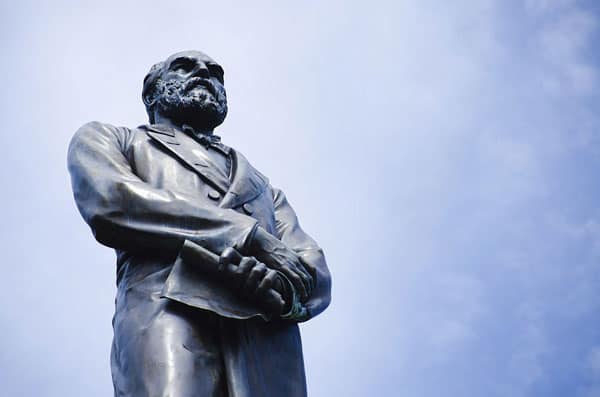
James Garfield was elected 20th President of the United States on November 2, 1880, after being nominated as a compromise candidate during the 1880 Republican National Convention in Chicago. Although Garfield’s electoral victory was decisive, with 214 votes, he won the popular vote by fewer than 10,000 votes, the smallest margin in U.S. history. James Garfield facts show that he was a strong federalist and fierce opponent of corruption. He was an advocate of hard money policies and a passionate proponent of civil rights.
James Garfield was a College President at Age 25
James Garfield developed a love for learning early on that served him well throughout his life. Even as a child, he loved to read, particularly stories about sailors and the sea. Garfield attended Western Reserve Eclectic Institute from 1851 to 1854 before transferring to Williams College in 1854 as a junior. After graduating with honors in 1856, Garfield became a professor of ancient languages and literature at Eclectic Institute and within a year was named president of the institute at the age of 25. He returned to Williams College in 1859 to pursue his master’s degree.
James Garfield Achieved the Rank of Major General by Age 32
James Garfield facts show that despite his lack of military experience, he made significant contributions during the Civil War. Commissioned into the Union Army as a lieutenant colonel in 1861, Garfield rose to the rank of full colonel within just a few weeks. He commanded the 42nd Ohio Infantry at the battle of Middle Creek in 1862, leading his outnumbered brigade to victory over the Confederates, and seizing control of eastern Kentucky. James Garfield was promoted to brigadier general later that same year, distinguishing himself once again at the Battle of Chickamauga in September of 1863. By the end of his military career, James Garfield had risen to the rank of major general at the age of 32.
James Garfield’s Courtship of Future First Lady Lucretia Rudolph Began during College
James Garfield met his future wife in 1849 when both were students at Geauga Academy in Chester, Ohio. They began courting two years later while she was a student at Western Reserve Eclectic Institute in Hiram, Ohio and he was a professor of ancient languages. The future First Lady was an outstanding student and an impressive public speaker. While at Western Reserve, she studied classical languages and literature and served as organizer of the school literary society and editor of the school magazine. James Garfield and Lucretia Rudolph were married on November 11, 1858. Known as “Crete” to her family and friends, Mrs. Garfield was admired for her independent thinking, elegance and poise, and was greatly admired for the grace and dignity she displayed upon her husband’s death.
James Garfield was a Fervent Supporter of Civil Rights
James Garfield’s political agenda was formulated from his fervent support of civil rights and fierce opposition to government corruption. He initiated the Pendleton Civil Service Reform Act, a federal law passed in 1883 that instituted the practice of awarding government jobs on the basis of merit rather than political association. In support of civil rights, James Garfield appointed former slaves to government positions and recommended a universal education system funded by the federal government that would be free to all Americans.
James Garfield Appointed Former Slaves to Government Positions
James Garfield achieved a number of milestones during his presidency. James Garfield facts show that he was instrumental in reasserting Presidential authority over the Senate on the issue of executive appointments and for initiating reform of the U.S. Postal Service “Star Route” rings, after a scandal involving bribery of post office officials in exchange for postal delivery contracts on coveted inland mail routes. James Garfield was committed to the cause of civil rights; he appointed former slaves to government positions and made significant proposals for civil rights reform that were later signed into law. Garfield’s foreign policy accomplishments included organization of a Pan-American conference aimed at furthering trade with Latin American nations. Although James Garfield’s assassination precluded the convening of the conference, it was eventually held in 1889, setting the stage for improved diplomatic relations with Latin American nations.
James Garfield Worked as a Carpenter, Mule Team Driver, and School Janitor
James Garfield facts show that during his early years, Garfield worked as a carpenter, mule team driver, and part-time schoolteacher. Upon enrollment in Western Reserve Eclectic Institute in 1851, he worked as the school janitor until his departure for Williams College in 1854. Following graduation from Williams, Garfield returned to the Eclectic Institute, where he was employed as a professor of ancient languages until his appointment as president of the Institute at age 26.
James Garfield became the youngest member of the Ohio State Legislature in 1859, serving two years while simultaneously studying law. He was admitted to the Ohio Bar Association in 1861 and commissioned into the Union Army that same year, rising to the rank of major general before resigning his commission in December of 1863 to take his seat in the U.S. House of Representatives. James Garfield’s congressional career would span 17 years, ending with his election as 20th President of the United States in 1880.
James Garfield was the Only President Who was also an Ordained Minister
James Garfield facts show that Garfield was influenced by the religious movement of the Disciples of Christ while growing up during the early 19th century. He experienced a call to Christianity at the age of 18, and was baptized on March 4, 1850. He conducted his first sermon in 1853, comparing the lives and achievements of two great conquerors, Napoleon and Jesus Christ. Upon his election to the Presidency in 1880, Garfield became the first and only U.S. President to hold the title of ordained minister, bringing worldwide publicity to the Disciples of Christ religious movement.
James Garfield was Assassinated Only 200 Days into His Presidency
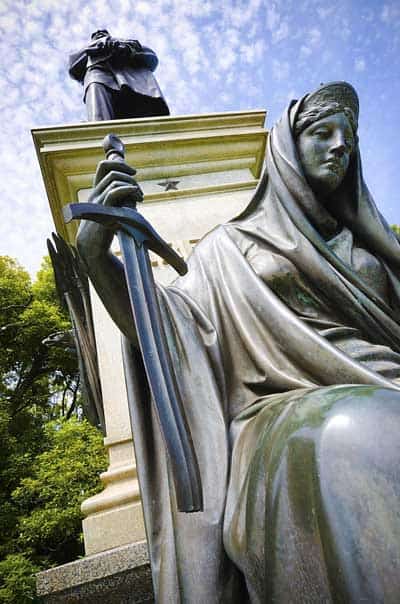
James Garfield facts show that Garfield was shot twice, once in the arm and once in the back, on July 2, 1881 by Charles Guiteau, an aggrieved attorney whom Garfield had refused an ambassadorship appointment. The shooting took place at the train station in Washington, D.C. as President Garfield was preparing to depart for Williams College where he was scheduled to deliver a speech. Seriously wounded, Garfield was taken to the White House, where he remained until September 6, when he was moved to a New Jersey seaside retreat to recuperate. James Garfield died in Elberon, New Jersey on September 19, 1881 of infection and internal hemorrhage.
James Garfield Initiated Postal Service Reform and Friendlier Relations with Latin America
Although James Garfield’s Presidency lasted only 200 days, he will be remembered for his initiation of Postal Service reform and for taking up the cause of political patronage by reasserting Presidential authority over the Senate on matters of executive appointments. James Garfield’s organization of the first Pan American Conference paved the way for friendlier relations with Latin American countries and was instrumental in thwarting British control over the region. James Garfield facts show that four years after the President’s death, First Lady Lucretia Garfield created the James Garfield Presidential Memorial Library, setting a precedent that would be followed by future Presidents to come.
James Garfield was the Last of the Log Cabin Presidents
James Garfield was born to Abram and Eliza Ballou Garfield in a 20’ by 30’ log cabin on November 19, 1831. His father died before his second birthday, leaving his mother to raise him and his four siblings alone on their small Ohio farm in what was then known as Orange Township. Garfield was the last of seven log cabin Presidents, and was preceded by Andrew Jackson, Zachary Taylor, Millar Fillmore, James Buchanan, Abraham Lincoln, and Ulysses S. Grant. A replica of the original Garfield cabin sits on the Village Hall grounds of Moreland Hills, Ohio (formerly Orange Township). The James Garfield Memorial Cabin is maintained and operated by the Moreland Hills Historical Society.
James Garfield was a Compromise Candidate in the 1880 Election
James Garfield was not the Republican Party’s first choice of nominee for the 1880 Presidential election. When the convention was unable to produce a winner from its three strongest candidates, James Garfield was awarded the nomination as a compromise candidate. Garfield’s immediate reaction to the nomination was to object, stating his support of John Sherman; however, he was overruled and awarded the nomination on the 36th ballot with 399 votes.
James Garfield was One of Three Presidents to Hold Office in 1881
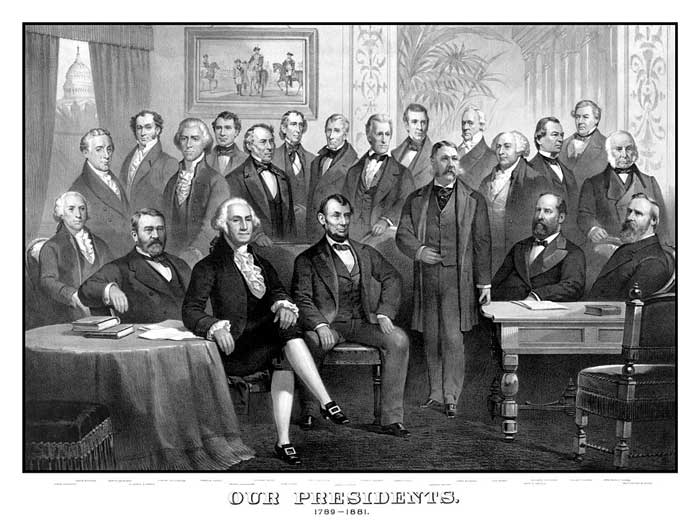
James Garfield facts show that President Garfield was one of three presidents to hold office in the same year, an instance that has occurred only twice in U.S. history. Garfield assumed the office of President from his predecessor, Rutherford B. Hayes, who served from March 5, 1887 until Garfield’s inauguration on March 4, 1881. Following Garfield’s death on September 19, 1881, Chester A. Arthur was sworn in as the 21st President of the U.S. on September 20, 1881.
James Garfield’s Favorite Food was Squirrel Soup
James Garfield facts show that his favorite food was squirrel soup. Garfield was also partial to homemade breads, mashed potatoes, and parsnips, and he loved to drink cold milk. While Garfield was known for eating just about anything, the one food he did not like was oatmeal. According to a favorite story told by constituents, Garfield was once quoted, upon being informed that Indian leader Sitting Bull was starving himself to protest his imprisonment, as saying, “Let him starve.” Then, after thinking for a moment, he said, “Oh, no, send him my oatmeal.”
James Garfield’s Spinal Column is Owned by a Museum
James Garfield facts show that a portion of his spinal column is held at the National Museum of Health and Medicine in Washington, D.C. The James Garfield exhibit clearly shows the hole made by the bullet that entered the President’s spine when he was fired upon by Charles Guiteau, a disgruntled political office-seeker who had been refused a political appointment by the President. James Garfield’s spinal column was placed on display for the last time on May 1, 2000.
James Garfield was Multi-Lingual and Ambidextrous
Although James Garfield is often referred to as the nation’s first left-handed President, he was actually ambidextrous, meaning he could write equally well with both hands. James Garfield facts show that Garfield was multi-lingual, as well, and often used his talents to amuse friends by having them ask him questions in English and then answering by writing simultaneously with both hands – in Greek with one hand and Latin with the other.
James Garfield was a Congressman, Senator-Elect, and President-Elect at the Same Time
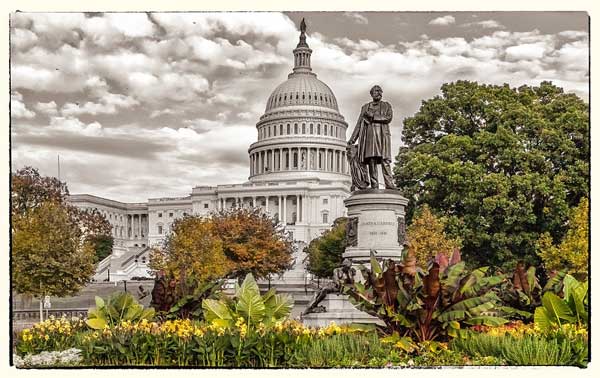
James Garfield was a man of many firsts. James Garfield facts show that he was the first President to be elected while still a member of the House of Representatives and the first and only man in U.S. history to hold the positions of Congressman, Senator-elect, and President-elect at the same time. Garfield was the first President to be both left-handed and ambidextrous and the only ordained minister to become President. James Garfield was also the first President to use what was known as a front-porch campaign strategy, and the first President to die before the age of 50.
James Garfield’s Death was Ultimately Caused by Doctors
Although President Garfield was shot twice by disgruntled office-seeker Charles Guiteau on July 2, 1881, James Garfield facts show that neither shot was fatal. Doctors arriving on the scene attended to Garfield with unwashed hands and unsterilized instruments as he lay on the train station floor. Like most of the American medical community, Garfield’s doctors had yet to subscribe to the theories of men such as Joseph Lister and Louis Pasteur concerning germs, antiseptics, and sterilization, believing instead that disease and illness were caused by bad air. More than 12 different doctors tended to President Garfield, probing repeatedly for the bullet they could not find and refusing the use of antiseptics, all while turning a non-fatal wound into a cesspool of infection and abscess. James Garfield died of blood poisoning and infection in Elberon, New Jersey on September 19, 1881.
James Garfield’s Death was a Turning Point in American Medicine
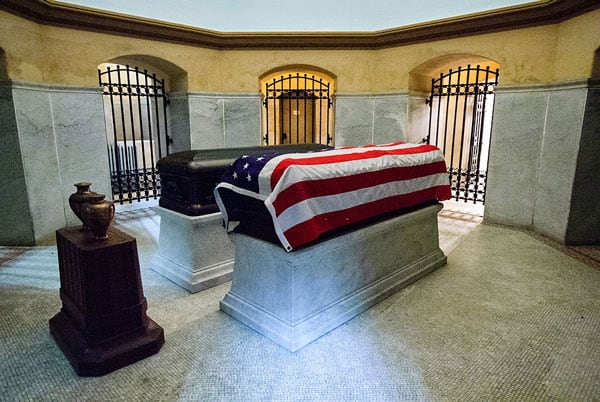
James Garfield facts show that Garfield’s death was a turning point in the history of American medicine. His death spurred positive reforms that furthered the use of antiseptics and sterilization methods such as those subscribed to by Joseph Lister and Louis Pasteur, pioneers of antiseptic surgery and disease prevention. Garfield’s death also raised awareness of the lack of trained nursing care in America, resulting in the development of national standards for American nursing schools at a forum held at the 1893 World’s Fair in Chicago. The events surrounding his death also spurred on a trend toward specialized medicine, spinal cord injuries in particular, which would probably have saved the President’s life.
James Garfield was an Athletic Man Who Enjoyed Hunting and Fishing
James Garfield facts show that he was a muscular, physically fit man with a prominent forehead, light brown hair, and blue eyes. Bearded since his early 20s, he stood 6 feet tall and weighed approximately 185 pounds. By nature, he was humble and amiable, witty and entertaining, with a ready smile and positive attitude. A quick learner, Garfield was prone to seriousness and was known for his determination, ambition, and courage. James Garfield enjoyed meeting people, good conversation, and witty repartee, as well as hunting, fishing, billiards, and drinking in moderation.
James Garfield Facts – Facts about James Garfield Summary
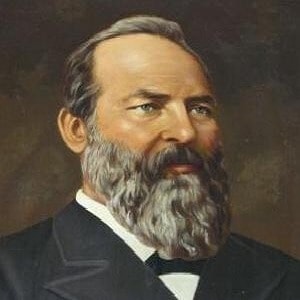 James Garfield was born on November 19, 1831 in Orange Township, Ohio. The last of the log cabin Presidents, Garfield’s love for learning led him to attend college, where he obtained a master’s degree and law degree by age 28. James Garfield facts show that he served in the Civil War, attaining the rank of Major General by age 32 and distinguishing himself at the Battle of Middle Creek and the Battle of Chickamauga. He developed an interest in politics early on, becoming the youngest member of the Ohio State Senate in 1859 and a member of the House of Representatives in 1863. His political career would span the 17 years until his election as 20th President of the United States in 1881.
James Garfield was born on November 19, 1831 in Orange Township, Ohio. The last of the log cabin Presidents, Garfield’s love for learning led him to attend college, where he obtained a master’s degree and law degree by age 28. James Garfield facts show that he served in the Civil War, attaining the rank of Major General by age 32 and distinguishing himself at the Battle of Middle Creek and the Battle of Chickamauga. He developed an interest in politics early on, becoming the youngest member of the Ohio State Senate in 1859 and a member of the House of Representatives in 1863. His political career would span the 17 years until his election as 20th President of the United States in 1881.
Was this page helpful?
Our commitment to delivering trustworthy and engaging content is at the heart of what we do. Each fact on our site is contributed by real users like you, bringing a wealth of diverse insights and information. To ensure the highest standards of accuracy and reliability, our dedicated editors meticulously review each submission. This process guarantees that the facts we share are not only fascinating but also credible. Trust in our commitment to quality and authenticity as you explore and learn with us.
